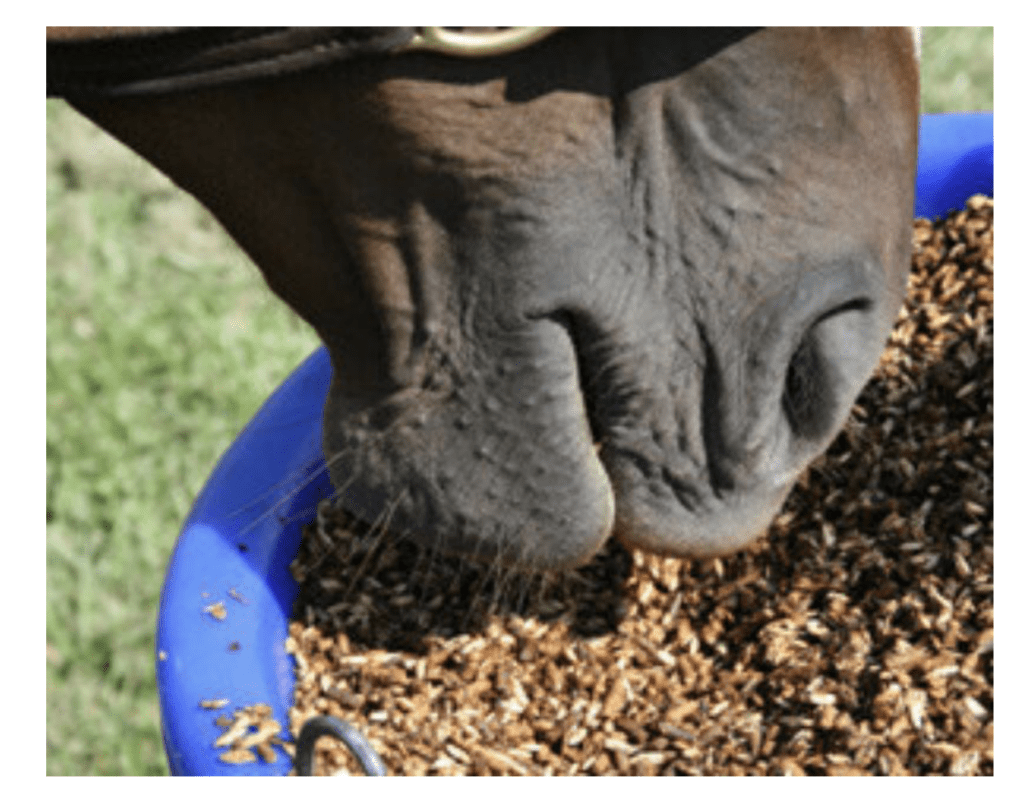Understanding Energy Support for the Performance Horse

Dr. Marilyn Connor of Palm Beach Equine Clinic Discusses Balancing Your Horse’s Energy Sources for Performance
The modern equine athlete is asked to train and compete at far more demanding levels than horses in nature. Providing your horse with a diet that matches their metabolic needs, activity level, and training demands is key to success. To fuel our sport horses, we must first understand their nutrition and energy needs and give them the adequate support to succeed.
Physical Demands
Anaerobic vs. Aerobic Exercise

Glucose is stored in the liver and muscle cells as Glycogen, or a complex carbohydrate. Glycogen is broken down into glucose to meet metabolic energy requirements and provides energy for short to medium duration physical activity. Additionally, fat can be broken down and converted into glucose through a longer and more complex process.
Exercise can be characterized into two general categories: anaerobic and aerobic. Anaerobic exercise is characterized by short bursts of maximal effort activity, while aerobic exercise includes low to moderate intensity activity that lasts for a longer duration.
Both anaerobic and aerobic exercise utilize glucose as the primary source of fuel. Anaerobic and aerobic exercise differ in their secondary source of energy utilized once circulating glucose is depleted. Anaerobic exercise utilizes glycogen stores after glucose is depleted, while aerobic exercise is fueled by fat sources.
No equestrian sport is entirely anaerobic or aerobic. Most disciplines will have periods that require anaerobic and aerobic energy metabolism. Racehorses and western performance horses work at high intensity, fast speeds for short periods of time, requiring the body to utilize anerobic metabolism to produce energy. Show jumping and polo horses primarily use aerobic exercise yet will switch to anaerobic metabolism to keep up with energy demands of their sport. Eventing and endurance racing horses rely primarily on aerobic metabolism to support their energy needs over long periods of activity.
To support your horse during any type of sport, they must have a balanced nutrition program that sets them up for success.
Forage First

“Providing high quality forage is always my top focus for any nutrition program, regardless of the horse’s breed, age, gender, metabolic needs or athletic activity,” says Dr. Connor.

Horses are herbivores and evolved to survive by grazing on a steady supply of fresh grasses and plants. Research conducted on horses in nature shows that the average wild horse will spend 15 to 17 hours per day grazing and will travel 20 to 30 miles per day in their search for adequate food and water sources. To accommodate for the lifestyle of the modern sport horse, owners must provide high quality forage sources.
Fresh grass contains an optimal blend of key nutrients including protein, carbohydrates, vitamins and fatty acids. Once grass is cut, dried and baled as hay, the nutritional benefits begin decreasing. A week after cutting, hay loses about 60% of its vitamin A, E, and Omega 3 fatty acid content. As a general rule, horses should consume 1 to 1.5% of their body weight in hay or forage per day, with some high performing equine athletes requiring 2 to 2.5% to meet their energy needs.
When hay and forage alone are not enough to support the intense metabolic needs of the equine athlete, grain, and concentrated feed become an important part of the nutritional plan.
Building Blocks of Energy Sources
Feeding your horse with the appropriate mixture of carbohydrates, proteins, and fat is essential for fueling athletic performance.


A horse whose training requires a high level of aerobic exercise, such as a dressage horse, should receive an adequate amount of fat and carbohydrates in their diet to fuel them through longer duration training sessions by providing extended, long-lasting energy sources. Racing and barrel horses, utilizing anaerobic exercise, require a higher percentage of carbohydrates in their diets to support them through maximal effort exercise for shorter periods of time.
Carbohydrates are sourced from forage, grains, and concentrated feeds. Forage sources provide a complex source of fibrous carbohydrates that require more time for the body to digest. Concentrated feeds and grains contain starchy carbohydrates that are easily digested and quickly converted into energy to fuel a horse through intense training. A well-balanced concentrated feed will also have an appropriate blend of fat, protein, and trace minerals.
Protein is an important part of the equine diet and is found in fresh grass, dried forage, and concentrated feeds in varying amounts. Protein is made of amino acids, which are the building blocks for growth, development, repair, and maintenance of body tissues. The modern equine athlete requires a substantial amount of dietary protein to support muscle growth and ongoing tissue repair.
Fat is a key component in most equine concentrated feeds and may be supplemented by adding flax seeds, flax oil, rice bran, and corn oil. These fat sources will provide slow burning calories for sustained energy release. Fat can be especially useful for supplementing a horse’s diet when they are a “hard keeper” or if they have an underlying metabolic condition that requires dietary carbohydrates to be limited.
It is important to remember that not all fats are created equal; as some fat sources can decrease or increase inflammation in the body. Flax seed and flax seed oil are rich in anti-inflammatory omega 3 fatty acids and can be an excellent source of energy. Corn oil is commonly used to add calories and fat; however, it is a less desirable supplement due to its higher percentage of omega 6 fatty acids, which contribute to inflammation. Concentrated feeds will have varying levels of added fats depending on the type of horse it is designed to feed.
Balancing Your Horse’s Energy Sources for Performance
Whatever equestrian discipline is your passion, your horse will need to be fueled by a balanced nutritional plan.

“Feeding instructions provided on grains and concentrated feed products are designed by nutritional companies as guidelines; they are not rules and should be adjusted based on total sources of nutrition,” said Dr. Connor.
Establishing the proper balance of forage, starchy carbohydrates, fat sources, vitamins, and minerals will be different for each unique horse and the demands placed upon them.
Understanding the nutritional demands of your horse can be very simple or very intricate, depending on your unique equine athlete. When designing a feeding program, it is important take into consideration your horse’s athletic discipline, performance level, metabolic needs, stage of life, and any underlying medical conditions. Furthermore, your horse’s nutritional needs will vary over time and as they age, so it is important to periodically assess your horse’s body condition and consult with a knowledgeable veterinarian.
Speak with Dr. Marilyn Connor of Palm Beach Equine Clinic about your horse’s unique nutritional needs to ensure your horse is fully supported and on track to reach your competitive goals.
Schedule a Nutritional Consultation with Dr. Connor
Fill out the form below or call 561-793-1599 to get started.